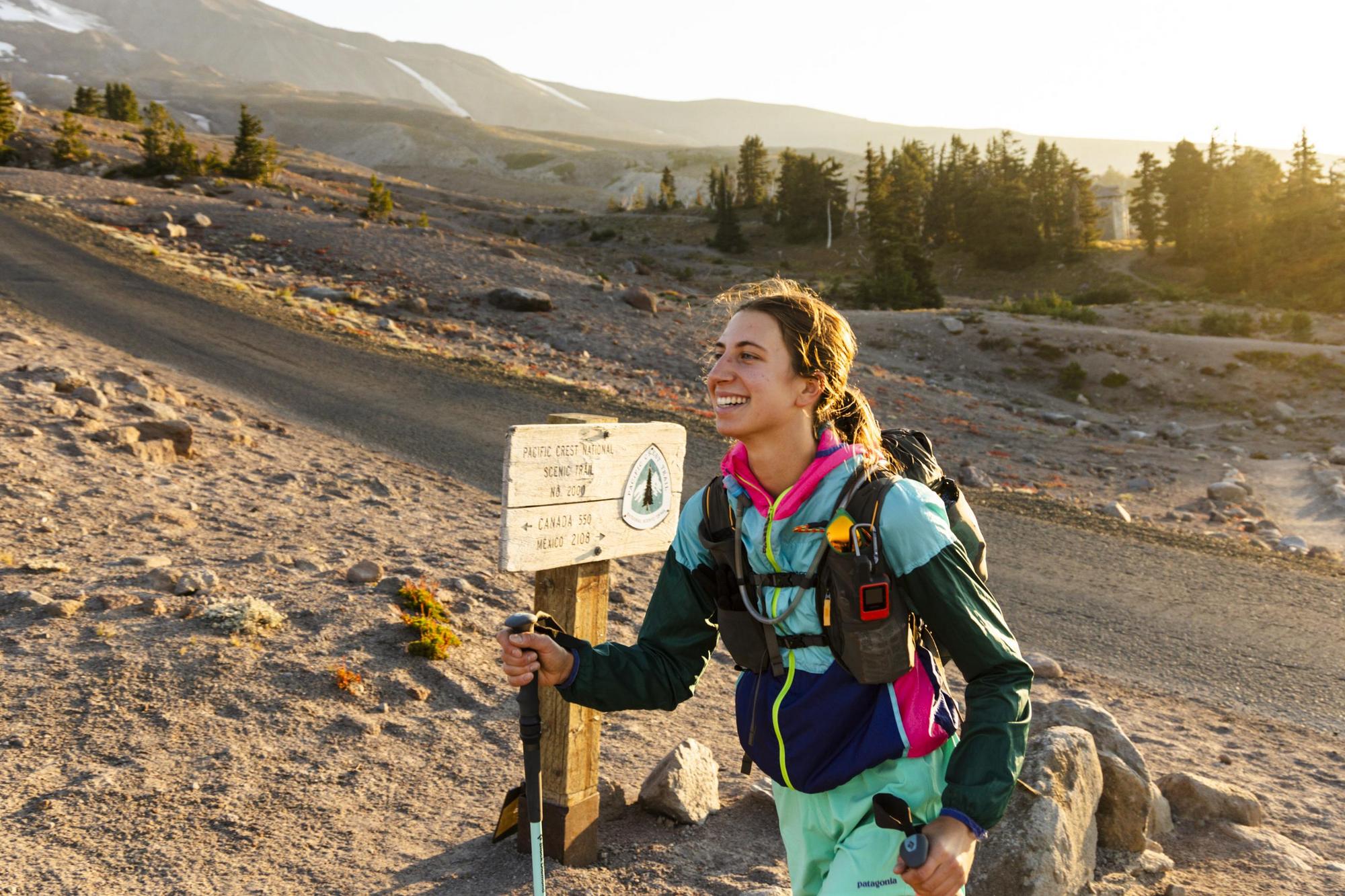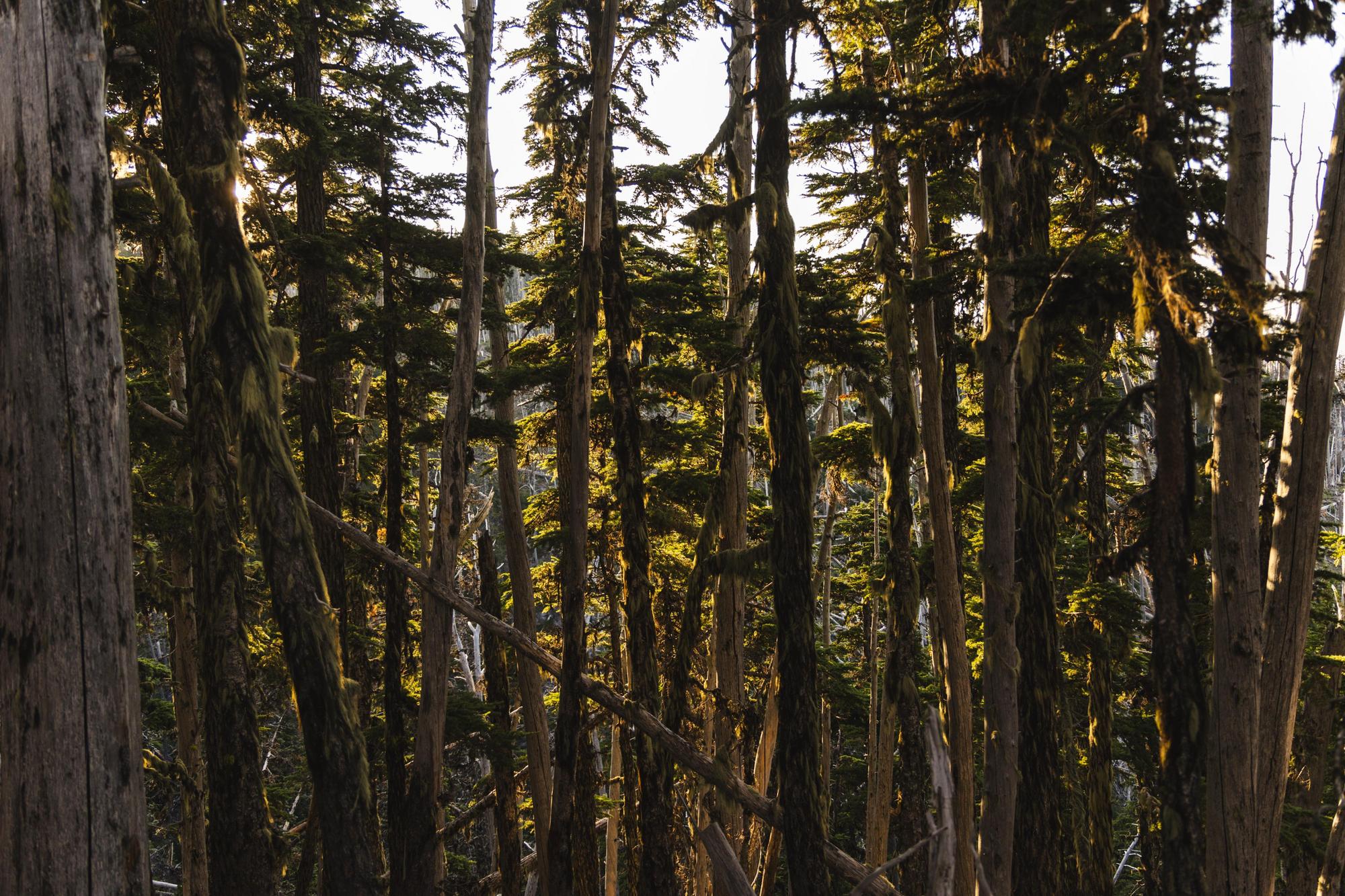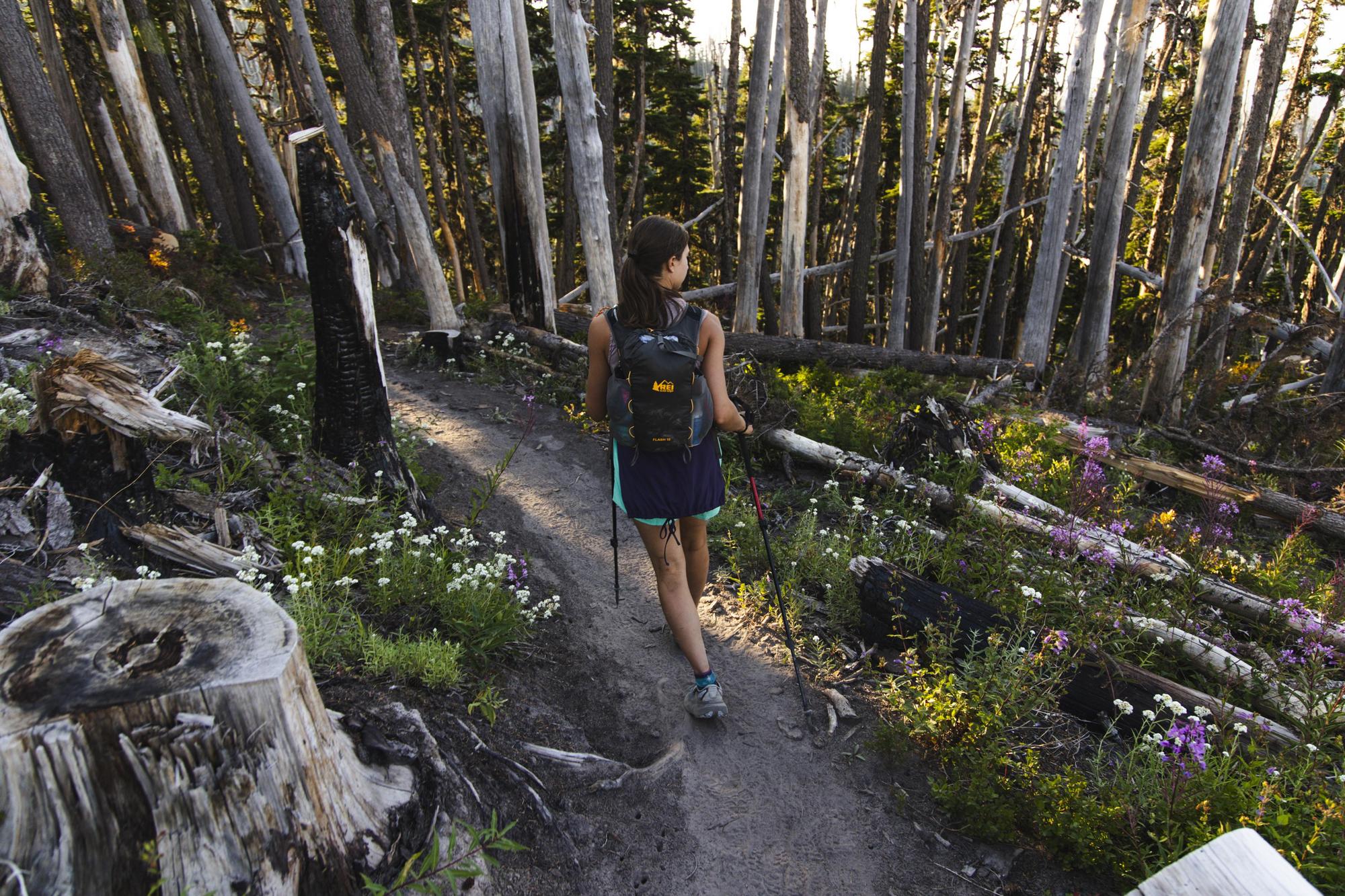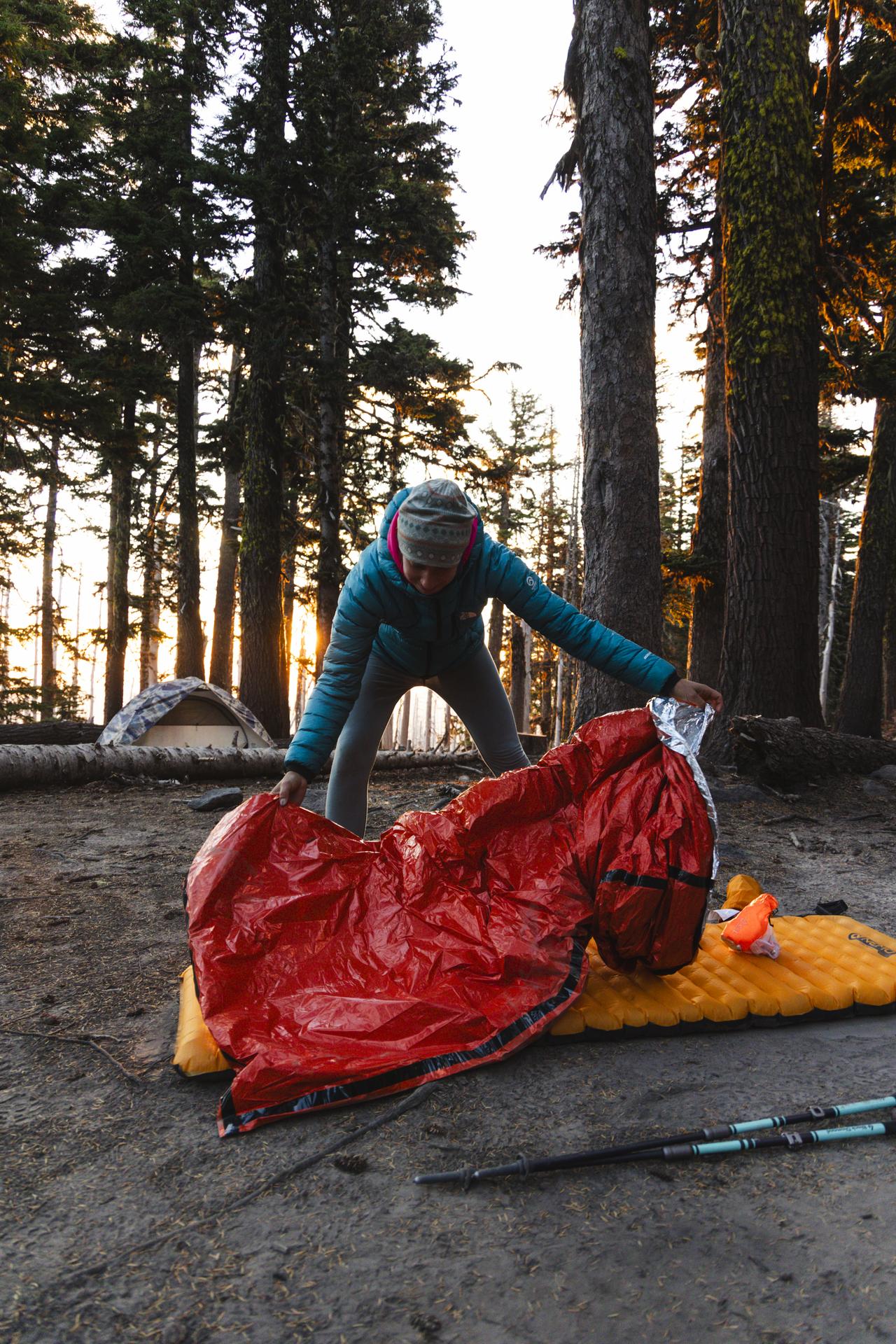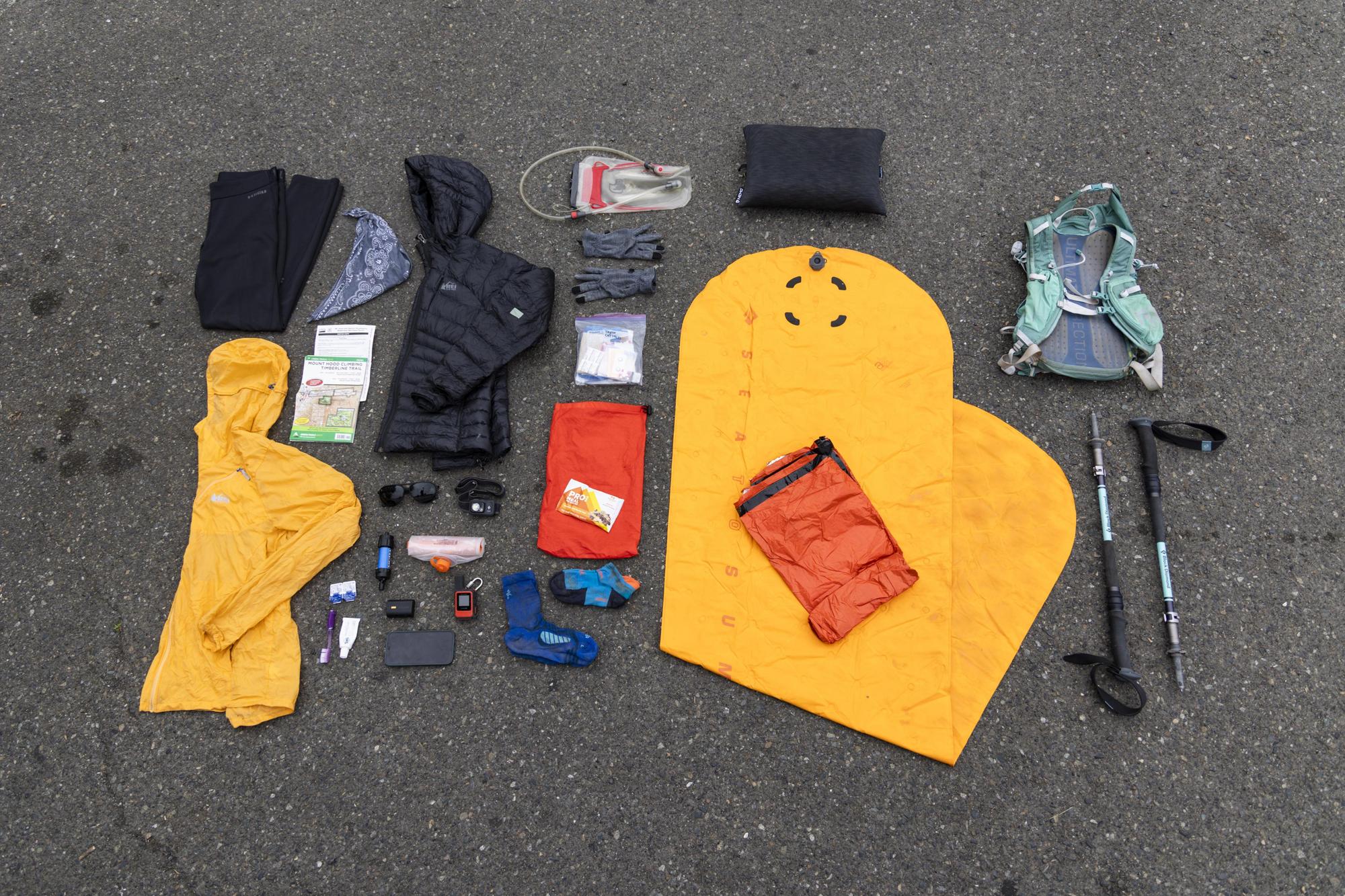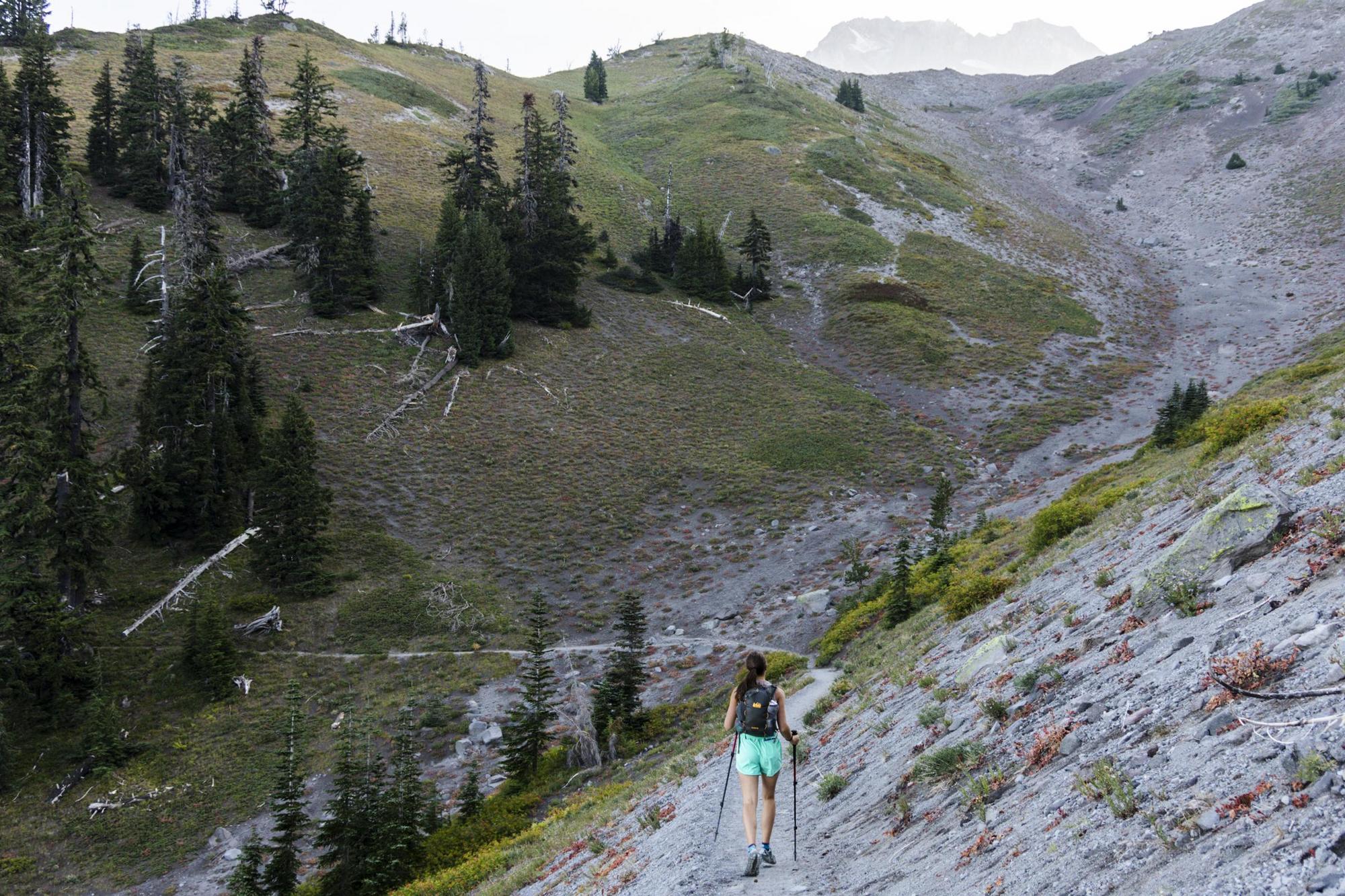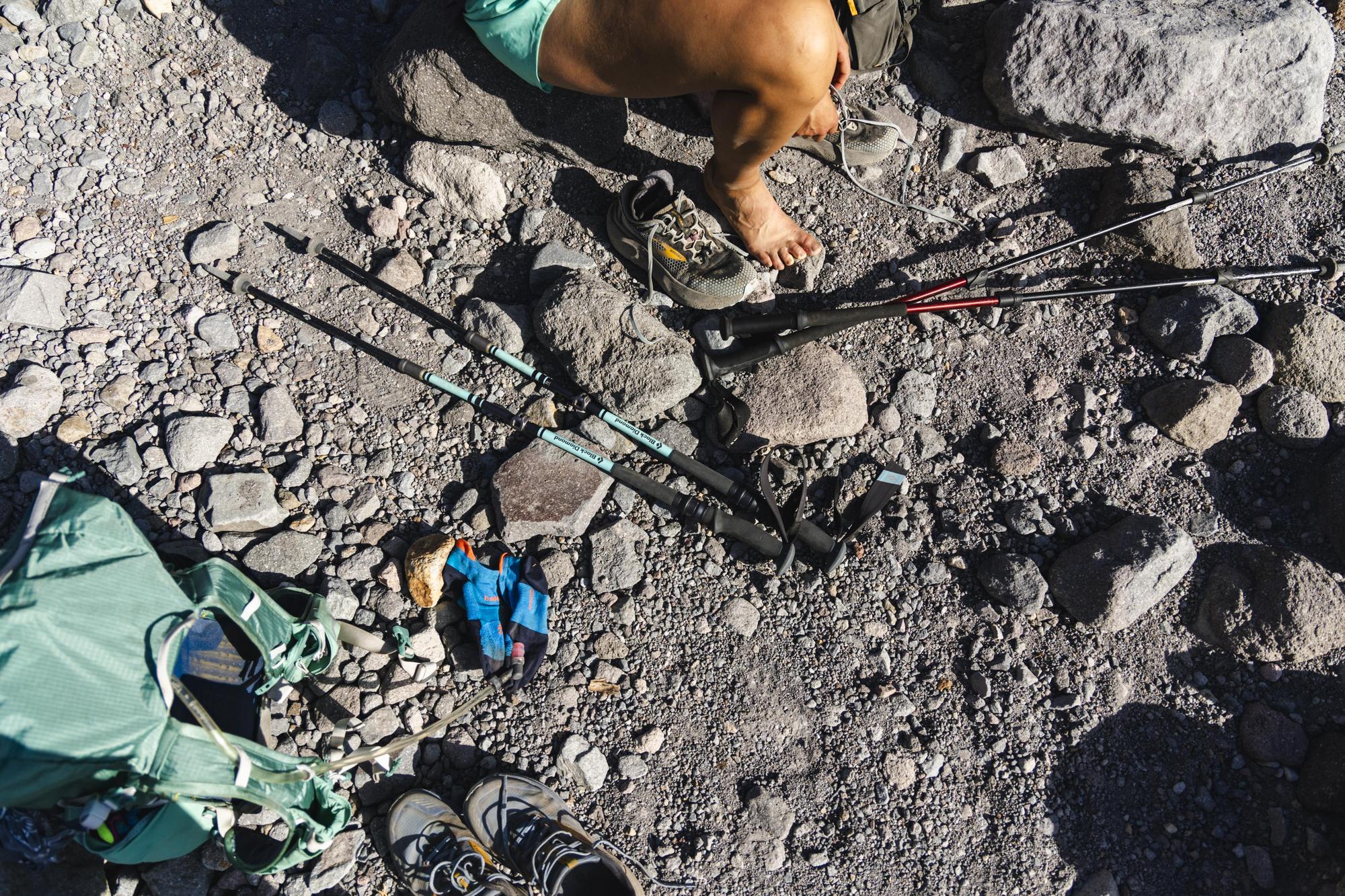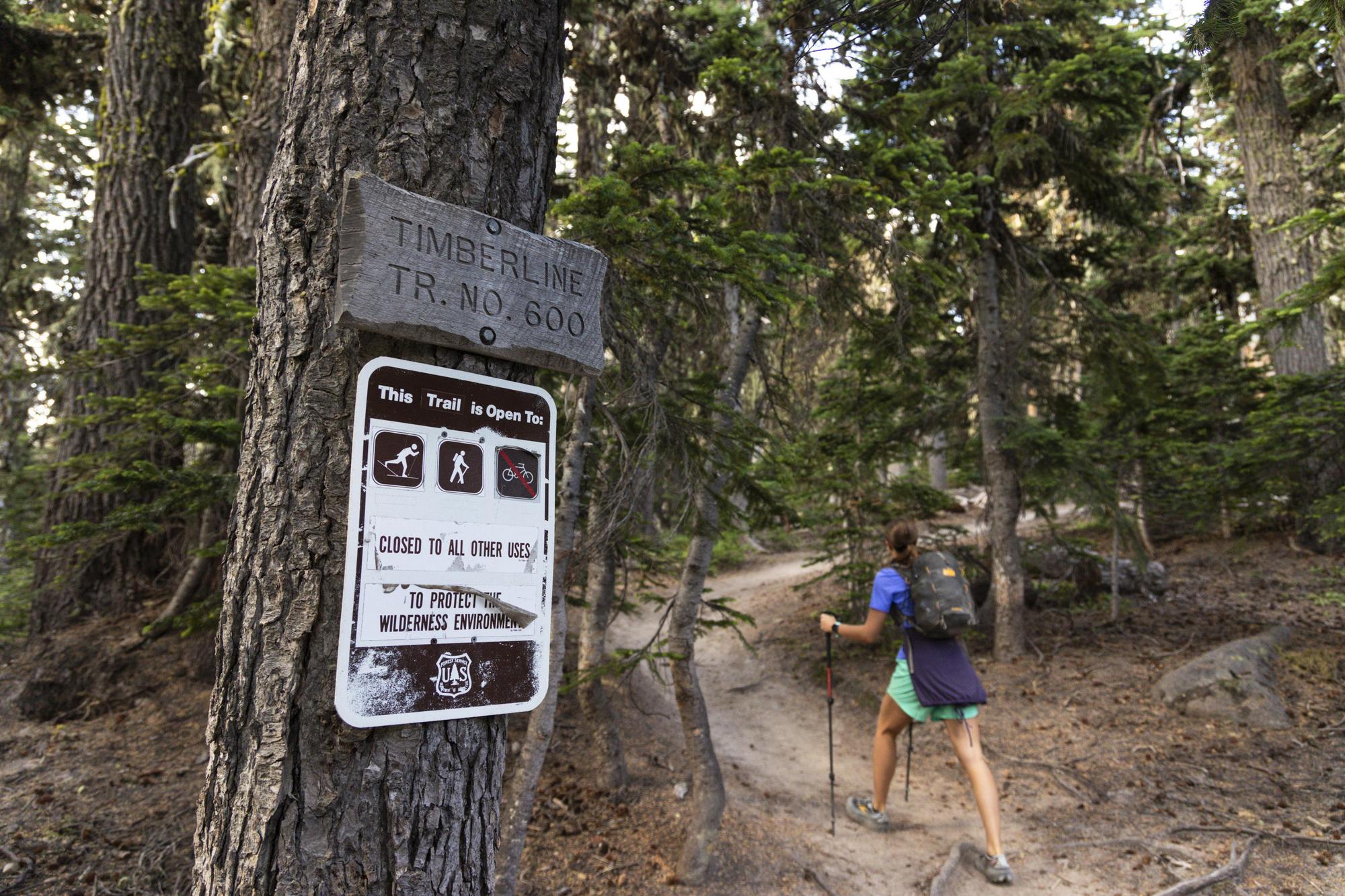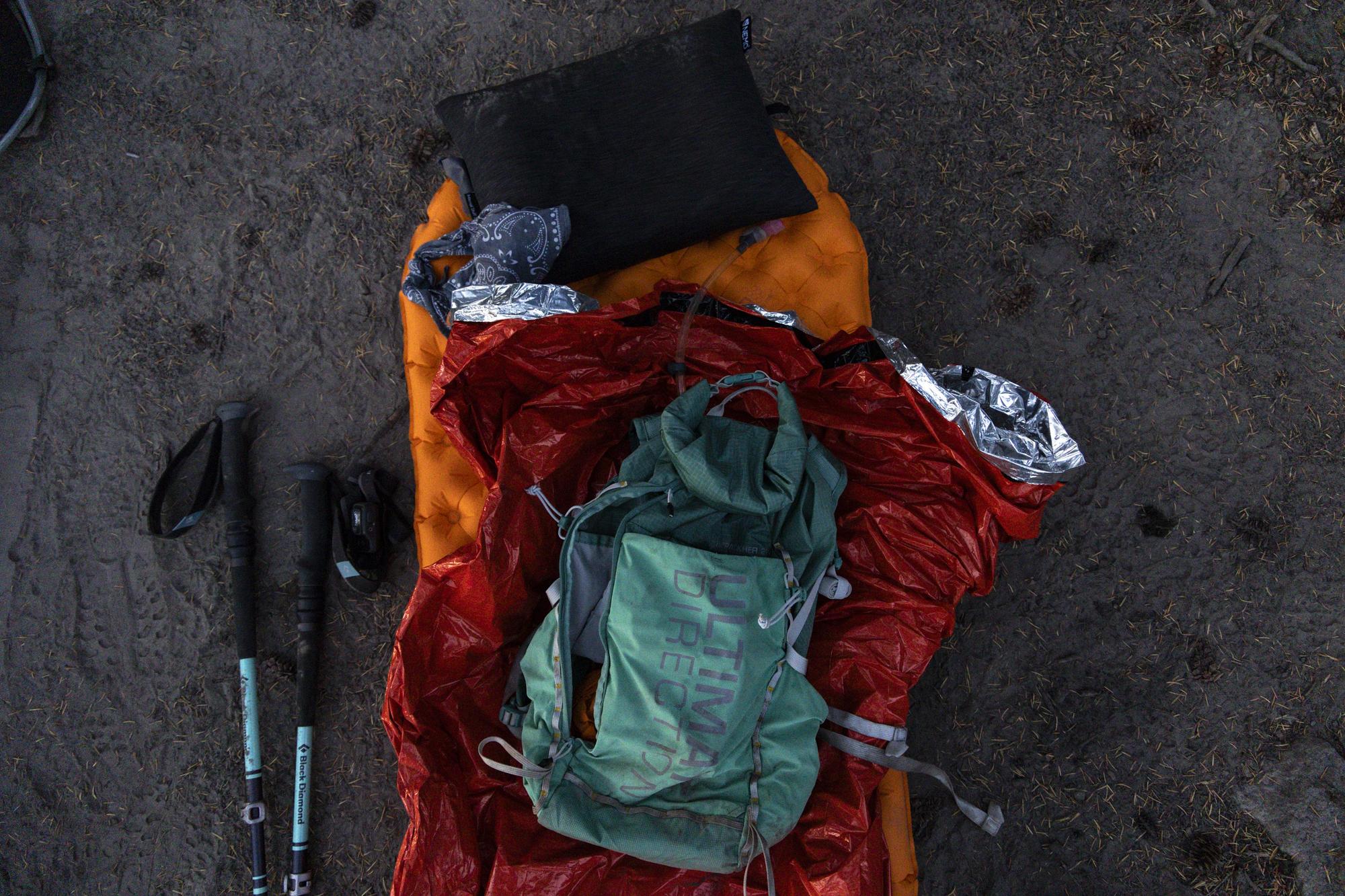As I readjust my running vest at the base of Oregon’s Mount Hood, I’m surrounded by the beauty that follows such devastation from forest fires in a stark reminder of nature’s resilience. Multiple hours into a fastpacking objective along the Timberline and Pacific Crest Trails, we’re at mile 18 of our Mount Hood circumnavigation. We have ten more miles to run today—or more realistically, ten more miles to fast-walk up various sections of the 10,000 feet of elevation gain. Standing in the midst of nature’s epic rejuvenation, I hope to everything good and holy that I’ll be just as revived after a few nighttime hours lying horizontal in an emergency bivy at our upcoming camp spot.
Before this late summer trip, I had only ever run 13 miles in a row. Our goal today is to travel 28 miles from Timberline Lodge to Cloud Cap campground.
In the car on our four-hour drive south to Mt. Hood National Forest, my friend Brooke and I joke that fastpacking’s motto just might be “intentionally underprepared.” Not only is the marathon-plus length new to us, but we’ve never tried our hand at the trail-running-backpacking mashup. Some nerves linger in the air.
The night prior, I popped the tags off a new 20-liter fastpacking running vest and laid out everything I hoped to bring. It was instantly clear I’d need to make some cuts. Goodbye, down sleeping bag. Any hopes of a stove-warmed meal were dashed. Somehow, my three-and-a-half pound camera would make the journey. A tinge of nervousness creeped in with each mainstay I left behind.
But for all the quips about feeling underprepared, I know we’re not. Proof comes in the form of satellite SOS devices, wilderness medical training, premeditated bail points, and well-researched smoke forecasts. Maybe more importantly, we’re armed with countless days in the backcountry together, building rapport and decision-making skills under pressure. We marvel at how nice it is to do something outside without the nagging, very real fear of death around every corner. This isn’t mountaineering over icy crevasses or skiing in avalanche terrain. We’re just running. Far.


